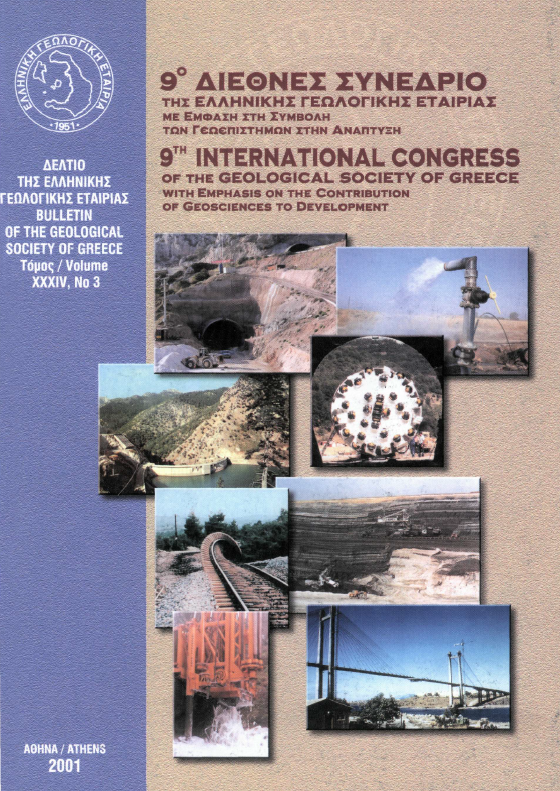EVOLUTION AND ORIGIN OF THE MARONIA PLUTON, THRACE, GREECE
Abstract
The Maronia pluton is the youngest of the Tertiary plutons that occurred in Thrace. Three rock groups have been distinguished: a basic, an intermediate and an acid one. Based on geochemical and isotopie characteristics, the basic group probably represents a magma that isotopically equilibrated with the intermediate group at a certain point of its evolution. The evolution of the intermediate group can be described by an assimilation-fractional crystallization process (AFC). The acid group represents crustai melts that are not genetically related to the basic and intermediate groups. The emplacement of the pluton is related to post-collisional extension resulting from the subduction of the African under the European plate. The magma source of the basic and intermediate group is considered to be a LI LE- and LREE-enriched subcontinental lithospheric mantle. The acid group has probably derived by the partial melting of crustai rocks and in particular, gneiss.
Article Details
- How to Cite
-
Papadopoulou, L., Christofides, G., Koroneos Α., Bröcker, M., Soldatos, T., & Eleftheriadis, G. (2004). EVOLUTION AND ORIGIN OF THE MARONIA PLUTON, THRACE, GREECE. Bulletin of the Geological Society of Greece, 36(1), 568–577. https://doi.org/10.12681/bgsg.16754
- Section
- Petrology

This work is licensed under a Creative Commons Attribution-NonCommercial 4.0 International License.
Authors who publish with this journal agree to the following terms:
Authors retain copyright and grant the journal right of first publication with the work simultaneously licensed under a Creative Commons Attribution Non-Commercial License that allows others to share the work with an acknowledgement of the work's authorship and initial publication in this journal.
Authors are able to enter into separate, additional contractual arrangements for the non-exclusive distribution of the journal's published version of the work (e.g. post it to an institutional repository or publish it in a book), with an acknowledgement of its initial publication in this journal. Authors are permitted and encouraged to post their work online (preferably in institutional repositories or on their website) prior to and during the submission process, as it can lead to productive exchanges, as well as earlier and greater citation of published work.







